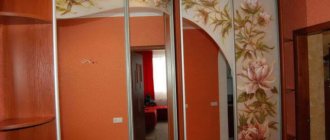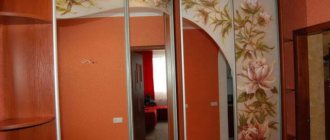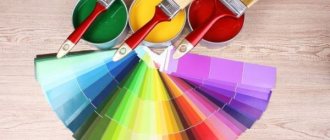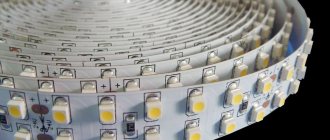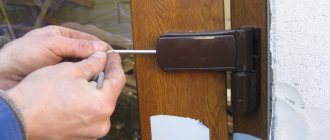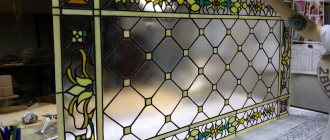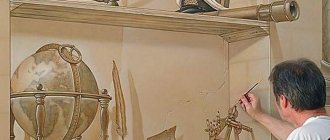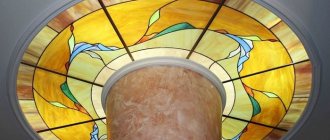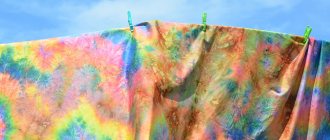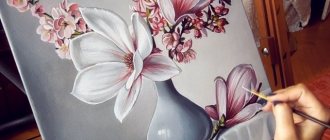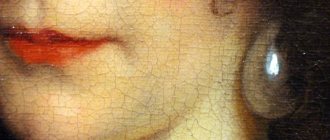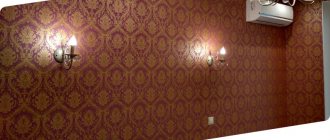In the general production cycle of factory-made and hand-made ceramic products, decoration is a mandatory and very important stage. Decorated crafts take on an aesthetically finished appearance. The artistic merit of a particular product depends on the decor. Despite the variety of technologies for decorating ceramics, two types of decoration are fundamentally distinguished: relief and pictorial. Relief decor is also known as sculptural or stick-on decor. The picturesque decor is a painting.
Painting means applying decorative coatings to a clay shard with special paints, engobes, glazes, enamels or chandeliers. Methods of painting are divided into manual, mechanical and combined.
Manual method:
- Painting with a brush;
- Pen painting.
Mechanical method:
- Airbrush;
- Decolcomania;
- Seal;
- Stamp;
- Silkscreen printing;
- Photoceramics.
Combined method:
- A combination of mechanical and manual.
Decoration is not considered separately as a separate process, since firing often plays a special role in it, as a result of which the paints applied to the surface of the ceramic are fixed on it.
Materials for ceramic painting
In the vocabulary of any ceramic artist there are such concepts as underglaze and overglaze painting. These are key concepts, however, it is possible to fully illuminate the issue of types of painting only after considering related topics; in particular, it is necessary to clarify what materials one has to work with when decorating ceramics. Manual work is more complex than automated work, but it is the master’s hands that can create such masterpieces as layers, tendrils, ribbons, and arabesques. Even in factory production, manual work is allowed at a certain stage.
Before any work, the ceramist must first prepare the material, that is, the paint that he will apply to the surface of the product. The difficulty of a ceramic artist’s work lies in the fact that he is forced to work almost “blindly”, since he cannot control the creation of the intended effect, and sees the result of his work only at the final stage.
The reason lies in the fact that many paints and glazes change color during the firing process. If some colors become brighter, others, on the contrary, become dull.
A special dye that is added to paints and glazes to give the product the desired background is called a pigment. Overglaze paints consist of pigment that is mixed with fluxes. Flux is a glassy, fusible substance that serves as the basis for paint. It is the flux that fixes the paint on the glaze during firing, giving it a beautiful shine. Overglaze painting involves applying paint to the surface of the finished glaze and subsequent firing at a temperature of 720 to 860 degrees.
To create underglaze paints, pigment is mixed with glaze. Underglaze paints are applied to a shard that has been fired or has been well dried. Underglaze paints are covered with glaze and only then fired along with it at a temperature of about 1300 degrees.
Chandeliers are not classified as dyes, but they are directly involved in decoration. These are thin iridescent films on the surface of the glaze. The luster layer is formed by introducing silver, gold or platinum into the glaze.
Engobes, which are a mixture of clay and dye, are also used for decoration. Engobing gives a continuous coating, that is, repainting the product in a different color. Engobes are applied to clay in a leather-hard state, that is, these dyes are classified as underglaze paints. The glazes themselves are not dyes, but some of them acquire a certain shade after firing. The firing result depends on the type of impurity. Metal salts are capable of producing original delicate shades.
- Blue color – cobalt sulfate;
- Emerald – chromium oxide;
- Brown – manganese oxide;
- Red – iron oxide;
- Amber tint – nickel oxide;
- Black color is a mixture containing chromium, manganese and cobalt.
How are ceramic products painted?
Decorating clay products is an ancient tradition that began its journey thousands of years ago. One of the main reasons for this was the lack of the ability to cheaply purchase papyrus or paper for keeping records, as well as the lack of literacy among the majority of the peoples of the world. Craftsmen were most often representatives of the lower classes of society, so all folk traditions were much easier to sketch than to write down in text form.
This is where the era of painting began, with each nation creating its own traditions and trends. The ceramics of Ancient Greece and Rome were significantly different from Chinese porcelain. The same applies to European and Slavic motifs, since each region had its own religious and everyday motifs.
Let's delve into the technical part of the issue, since it is very important to understand how ceramic painting was done.
Initially, the only type of paint for painting was slip or mineral paints, which were applied before firing the finished product. This decorative technique was used in Ancient Greece, and it is Greek vase painting that is the most studied and widespread. In addition to ordinary painting, a combination of engraving and subsequent painting was often used, which made it possible to create a three-dimensional pattern.
Now on the market there is a huge selection of compositions for decorating ceramic products of all types, and almost 100% of them are acrylic paints.
There are several reasons for this:
- Cheapness - price is always the main criterion for choosing tools and materials for work, which is why acrylic paints have become so popular. Due to their low price, they can be used even by complete beginners who are encountering product painting for the first time.
- Easy to use - you don't need any specialized tool to apply the pattern. To apply, you will need a regular brush, just like when you were a child.
- Availability - in addition to the low price, acrylic paints can be found in almost every corner of the planet. This fact also played a huge role in the choice of decor for ceramics.
- Durability - acrylic paints themselves are not reliable, but by glazing the entire product it is possible to “freeze” the design, preserving it for decades.
It is worth mentioning right away the compositions of acrylic paints for painting, since they can be water-based or organic (solvent-based). The first ones are the easiest to use, because they are easily diluted and washed off with plain water. The second type requires the use of special solvent compounds for rinsing.
Basic information about underglaze painting
As mentioned above, the pictorial decor is formed either under the glaze or on its surface. These are the main differences between underglaze painting and overglaze painting. By choosing the technology of underglaze painting, the artist forms an image on the unglazed surface of the shard. Two types of underglaze painting have been defined:
- Scrap painting;
- Painting on wet clay.
Scrap painting differs in that the paint is applied to the shard after it has been fired. When painting on wet clay, the product is not fired, but only dried. Aqueous solutions of metal salts are most suitable for working with raw clay. They are applied to the clay using a brush. In this technology, the creation process does not end with decoration. The painted shard is fired using a salvage firing method, covered with glaze and fired again.
Underglaze painting has some advantages. Firstly, it is stronger and more durable. During the firing process, the paint fuses with glaze particles, forming a film that does not wear off over time. Secondly, the outline of the drawing does not form a relief if it is not necessary. Thirdly, using underglaze paints you can create pictures with a three-dimensional effect.
However, there are not many underglaze paints that can withstand high firing temperatures, so their palette is quite poor. A popular paint for underglaze painting is cobalt nitrate, sulfate or cobalt chloride, which gives a blue color after firing. It is used in painting Chinese porcelain and Gzhel.
Underglaze painting is done directly with a brush, but paints can also be applied according to a previously prepared pencil drawing. At the same time, a ceramic artist must possess not only drawing techniques, but also be able to eliminate possible defects. When using powder paints, they are ground on a glass palette, mixed with water until a creamy mass is obtained. When applied to a shard, water is absorbed into it through the pores, and the paint is fixed to the surface. Extreme caution is required from the master, since the paint is partially absorbed into the clay, so any corrections will leave behind contaminated stains.
Types of ceramics
The type of ceramics produced depends on the raw materials. It could be:
- porcelain – has the most noble appearance. It is white, transparent, very durable and clear, resistant to the external environment. It is obtained by mixing white clay, feldspar and quartz in different proportions. The secrets of obtaining good porcelain were treasured in ancient times;
- terracotta is a red-brown material so rich and bright that it gave its name to the color - terracotta. This material is used mainly for decorative crafts because it absorbs moisture well;
- Majolica is a porous material with the natural color of clay. The surface of the product is covered with glaze and painted with enamels, which allows the majolica not to absorb water;
- faience is a white material with a porous surface. To use it in everyday life and give it the necessary water-repellent properties, it is covered with transparent coatings.
Underglaze tools
Each master determines the list of tools for carrying out the work independently. He usually uses the following devices:
- Glass palette for preparing paints;
- Chime, which can be used to crush dye on a palette;
- Spatula for mixing paints;
- Glycerin or sugar syrup (plays the role of a diluent);
- Brushes;
- Tracing paper;
- Pieces of clean cloth;
- Foam rubber.
Depending on the tasks assigned, the list of tools may change. It is most convenient to carry out work on a special rotating tournette. In order for the artist’s movements to be accurate, he must organize a high and low hand support. In the technique of underglaze painting, in contrast to overglaze, it is necessary to take into account a more intensive consumption of paint, since it is partially absorbed into the porous shard.
Three worlds of patterns. Mezen painting
Three worlds of patterns. Mezen painting. Photo: patlah.ru
Three worlds of patterns. Mezen painting. Photo: open-collection.com
Three worlds of patterns. Mezen painting. Photo: patlah.ru
Mezen painting appeared in the 19th century in the lower reaches of the Mezen River in the Arkhangelsk province. The oldest product with Mezen patterns - a painted spinning wheel - dates back to 1815. Local residents decorated chests, tues (round birch bark boxes) and dishes - ladles, bowls, barrels and plates. By the beginning of the twentieth century, the village of Palashchelye became the center of Mezen wood painting.
Mezen craftsmen painted the prepared dishes with ocher on clean, unprimed wood using a special wooden stick - a vice. A black outline was made with a capercaillie or black grouse feather, and then red and black patterns were applied with a brush. The master divided the drawing into three parts: heaven, earth and the underworld. He marked their boundaries with a straight line, and placed the patterns in strict order. The main elements of the painting were animals and birds: horse, deer and duck. The drawings were framed by geometric patterns of rectangles and rhombuses, disks and lattices.
According to tradition, only men were engaged in Mezen painting; the master’s skills were passed on by inheritance. First, the aspiring artist was told about symbols and their combinations in a pattern, taught to mark the product and draw contours. Before drawing ornaments, future craftsmen trained for a long time - they wrote sticks and lines.
Techniques and methods of underglaze painting
The manual method of decoration makes it possible to create elements of varying complexity, which include ribbons, layers, and tendrils. Simpler elements are ornamental painting and contour drawing, while landscapes, portraits and thematic compositions are considered complex. The artist must form the drawing in such a way that there are no subsequent corrections.
We can say that underglaze painting is an activity for those masters who can boast of an accurate, confident brushstroke.
The pictorial method of painting requires special qualifications. It is necessary to know the technology of working with paints and constantly monitor the quality of the drawing. Here the artist’s experience and taste play an important role. Scrap painting is the most popular option for underglaze painting. Paint is applied to the fired surface and then glazed and fired again. This is how faience is painted. This method has a certain advantage over painting on wet clay. The fact is that the product acquires high mechanical strength in the process of waste firing. Neither paints nor glaze will cause destruction of the product as a result of getting wet.
Porcelain is fired by pour firing at a higher temperature, so underglaze painting is used less frequently for decorating porcelain, since not all paints can withstand such high-temperature firing. Cobalt paints work well for porcelain. They reveal themselves especially juicily if the product is re-decorated with overglaze painting.
Painting on wet clay is carried out immediately after the product has dried. Drying is very conditional, since the clay is still in a wet state. Aqueous solutions of metal salts are used as dyes. The clay is covered with enamel, which acts as a primer. A design is applied to the dried surface, and the artist must use the brush so as not to apply strong pressure. Glycerin is added to the paint so that the brush does not “stick” to the primer. Glycerin slows down the process of water absorption by enamel.
The artist's work begins with simple drawings. The low hand rest is convenient when decorating flat products (plates, plaques, panels). One of the techniques for forming the outline of a drawing is based on the use of tracing paper. The paper is placed on a drawing, which is a sample, and holes are made with a needle along the perimeter or contour. Then the tracing paper is applied to the surface of the product and dusted with coal powder. Particles of powder penetrate through the hole and land on the clay. To make the effect more clearly visible, use a gauze swab.
More complex compositions are pre-drawn on paper and even painted. The ceramist must take into account the shape of the ceramic surface and the possibility of changing color tones after firing. To do this, you can run a control palette. Without a preliminary outline, it is somewhat more difficult to form a drawing. The artist must apply paint not only accurately, but also quickly. The following techniques are used:
- Smear;
- Stamp;
- Seal;
- Blowing out.
Smear
The brushstroke is considered the main painting technique. Portraits and landscapes are made based on brush strokes. To learn how to work, you should master the technique of applying the correct strokes. Beginning ceramists should not try their hand at clay right away. It's best to practice on a piece of paper. The simplest technique is to paint with one color. The viscosity of the paint for brush strokes should be medium. More detailed techniques for applying paint to a brush, as well as stroke techniques, are given in specialized literature.
Stamp
The base for the stamp is made of rubber or rubber. When making a stamp, a metal cliche is used, from which a plaster cast is taken. A rubber plate is placed on the surface of the plaster, pressed against it and heated. As a result of such manipulations, a stamp appears. Usually simple patterns of the same color are stamped. Stamps are convenient when you need to make many identical drawings. The paint is rubbed over the stamp with a spatula, and then the stamp is pressed against the shard.
Despite its apparent simplicity, such work requires special painstaking care. The junction of several stamps should not be visible.
Seal
A print is an outline drawing. Using tracing paper, it is transferred to a steel plate and engraved along the contour. The more intense the paint in the drawing, the greater the depth of the engraving. The shadow area is formed by dots or shading. To create one drawing you will have to spend a lot of time. The surface of the plate is covered with paint so that it fills all the recesses.
Next, a sheet of paper is placed on the plate with paint and rolled with a roller. Uncured paint leaves a mark on the paper. At the last stage, moistened paper with still uncured paint is applied to the shard, which must be moistened with water. In this way, the paint is removed from the metal plate onto the paper, and then from the paper onto the shard. This determines the properties and consistency of the paint. It should be easy to remove and should not dry quickly.
Often the artist paints the drawing inside the outline with an additional brush. After this coloring, additional firing will be required.
Blowing
The principle of airbrushing or spraying is that paint is sprayed onto the surface of the product through a pre-prepared stencil. Dextrin is added to spray paint. The consistency of the paint should be liquid. The stencil is made from any suitable plate in which holes can be made. From available materials, food foil is suitable.
Silkscreen printing
Silk fabric meshes serve as stencils. The paint is pressed through the mesh with a roller. The thickness of the paint layer depends on the thickness of the thread. The images appear in relief. To obtain a multi-color design, you also need several stencils; each layer must be dried or thermoplastic paints must be used to speed up the drying process. The colors harden almost immediately upon contact with the cool ceramics.
Unusual textures have been created to decorate ceramics:
- Variegation—the use of contrasting colors in different combinations
- Creating the texture of marble, wood for ceramics: if you use a rolling pin made of dense beech, then all the small lines are clearly imprinted on the raw product, and another unusual pattern will appear
- Gilding—liquid gold painting
- Arabesque—repetition of the same pattern several times
To decorate tableware and other ceramics, different methods are often combined to complement each other, increasing the strength and brightness of the designs, allowing for the creation of unique and repeatable creations. And if you want to try more ways of decorating and sculpting, we suggest visiting the Kolokol pottery school.
Defects in underglaze painting
Difficulties await a ceramic artist at every stage, including the decorating stage. Underglaze painting is characterized by specific defects, which in some cases can be eliminated. In other cases, it is better to prevent an emergency situation so as not to completely damage the product. The first characteristic defect is peeling of paint from the shard. This situation arises for the following reasons:
- The paint was applied in an excessively thick layer;
- The surface of the shard was poorly cleaned of dust;
- The firing technology is broken.
The next defect is that the glaze seems to roll off from the places where the paint was applied. It behaves like water on a greasy surface. The reason for this phenomenon is the incorrect selection of paints. Excessively fire-resistant paints require the addition of a special flux. A similar defect will be observed if a lot of glycerin is added to the paint.
Sometimes the opposite effect is observed, in which the paints spread.
This means that they cannot withstand firing temperatures as they are fusible. Firstly, before starting work, you need to familiarize yourself with all the characteristics of the materials used. Paints containing cobalt or iron oxides are considered fusible. Secondly, you can correct the situation by adding an admixture containing magnesium oxide or aluminum oxide to the dye.
Rocking horse, rolling horse. Gorodets painting
Rocking horse, rolling horse. Gorodets painting. Photo: Lori Photobank
Rocking horse, rolling horse. Gorodets painting. Photo: Lori Photobank
Rocking horse, rolling horse. Gorodets painting. Photo: Lori Photobank
Gorodets painting has been known since the second half of the 19th century. In 1870, icon painter Nikolai Ogurechnikov arrived in the Volga region, in the village of Kurtsevo, Gorodets volost. He taught local artisans how to make paints and enliven the design with strokes of white. At first, artists painted bottoms - flat boards on which housewives sat when they spun wool and flax. The bottom, decorated with carvings and colored designs, also served as interior decoration.
Gorodets painting was distinguished by contrasting bright colors. Artists depicted black horses with long necks and thin legs, roosters with their heads held high and a bushy tail, and they painted scenes from merchant life - family tea parties, walks of young ladies with their gentlemen. An obligatory element of a painted Gorodets product is voluminous bouquets and wreaths of roses, daisies, and flowers.
Spoons and boxes, caskets and bread bins, furniture and shutters were decorated with colorful designs. Craftsmen also made and painted children's toys from wood chips: dolls, rocking horses and even miniature sets for little housewives - spinning wheels, spindles, irons. The rolling horse was especially popular. Wooden horses were harnessed to painted sleighs, and coachmen were seated in the cart. Toy craftsmen did not use either glue or nails in their work: with jeweler's precision they adjusted the parts, of which there were sometimes more than thirty. “To make a gurney, you need to know demons,” they said in Gorodets.
Basic information about overglaze painting
Experienced ceramists use overglaze painting somewhat more often than underglaze painting. We can say that this method of decorating ceramics has become the most favorite. There are several factors that emphasize the advantages of overglaze decoration, which explains the acquired popularity of the method.
- Overglaze paints need to be fixed, but their firing temperature does not exceed 850 degrees. This is not such a high temperature, so the list of shades of overglaze paints is much more diverse than underglaze. Only coral and orange paints are fired at an even lower temperature.
- Poorly applied paint can be removed from the glaze using alcohol or turpentine. This way the artist can make corrections.
- Paintings can be decorated with silver or gold.
- Even fired pieces can be repaired by re-decorating them and then firing them again.
- Overglaze paints are less durable, but easier to use.
Overglaze painting is done manually, but a combined method is also used, which includes the use of ceramic paints, chandeliers and gold.
An important distinctive feature of overglaze painting is that the paint is applied to a glazed and fired surface. The tool used is a brush or pen.
At the final stage of decoration, the product is fired so that the dye fuses with the glaze and adheres well to it. The design made on top of the glaze is distinguished not only by its relief, but also by its clarity and richness of colors.
Master class No. 2: painting plates using stencils and templates
Another method that anyone can master is painting dishes using stencils and templates.
To work you will need:
- Acrylic paints for glass and ceramics or felt-tip pens for painting dishes, which come in different colors and rod thicknesses. In Russia you can most often find markers from Marabu;
- Art synthetic brushes of suitable sizes (if necessary) or a sponge for tamping;
- Nail polish remover, alcohol or degreaser and cotton pads for degreasing;
- Everything you need to draw and cut out a stencil or template: paper, cutter, pencil.
Drawing technique
First, you need to draw or print a ready-made stencil/template yourself, and then use a utility knife to cut out the required holes. Perhaps, in this technique, only this stage can be called labor-intensive. Then everything is much simpler: degrease the surface and glue the template to the bottom with tape.
Then we paint over/stamp the design using the stencil. Then you can place accents on your picture, draw details or contours.
If you painted with acrylic paints, then you can dry them naturally, with a hair dryer or in the oven according to the recommendations of the first master class on dot painting of plates.
Overglaze tools
Some ceramic artist's tools for overglaze painting are exactly the same as for underglaze painting. However, in any literature, the tools for one or another decoration method are considered separately.
The main tool is the brush. You should be very careful when purchasing a brush. The ideal option would be a squirrel hair brush. An alternative is brushes that use weasel or cow hair. The main requirement is that the hair must be elastic and soft. It should not leave a relief on the paint, and after stopping the pressure, the hair should return to its original position. If you plan to form small elements, then you need to select brushes with thin and elongated tips.
The quality of the drawing depends on the condition of the brushes, so they need to be carefully looked after.
If the brush is not needed for a long time, then it is moistened in turpentine oil and sharpened on the palette. If the brush is dry in the paint, then regular alcohol will help to wash it. Not everyone knows that there are certain rules for working with a brush. For example, when an artist takes paint, he must remove the brush from the paint in relation to himself. In this case, the hair does not break, and the tip of the brush is extended, becoming sharper. The spatula is a universal tool. For example, they are used to mix powder paint and turpentine oil. The spatula is most often made of steel, although there are also examples made of plastic or rubber. When purchasing, you should make sure that the spatula is elastic, otherwise it may quickly break. Some artists use homemade tools. A homemade spatula is made from a metal ruler, but you must remember that certain types of paints react with metal, so it is recommended to use plastic to make your own tool.
A palette is a tablet made of glass and used for preparing and mixing paints. Powder paints are mixed with turpentine oil. It is not for nothing that the palette is made of glass, since this is the most suitable material from which the paint lags behind well. If the dye attaches to the surface of the palette, then after each change of paint it will have to be washed thoroughly.
Engraving needles and cutters are used for relief painting. Using a cutter, you can make a through gap in the paint layer. A needle is also needed to make gaps, but it allows for more delicate work. You can also use a needle to remove small foreign particles that accidentally fall on the surface of the product.
Modern artists use a graphite pencil for drawing. Its lead is soaked in turpentine, after which clear marks are left when drawing on the ceramics. A graphite pencil can be used to draw smaller elements than a grease pencil.
Additional tools for overglaze painting include: a rag for paints, a stand for brushes, containers for turpentine and ready-made paints, and a tournette.
Painting ceramic plates
Ceramics is the most common material for printing images. But to paint ceramic dishes you need skills, since working with ceramics is quite difficult. As a rule, drawing on this material requires extensive training, during which specialists give master classes with a detailed description of the procedure.
.
Any paint that is resistant to hot and cold water is suitable for working with ceramic products, but enamel is the most ideal. It is this that adheres well to clay and allows the product to remain attractive for quite a long time. Ceramics are also often painted using acrylic paints. They are ideal for beginners.
To begin with, the surface of the ceramic product is prepared as described above, and after that you can safely begin to work. You can apply drawings using stencils
or thin brushes. In addition, special markers are used for drawing on ceramics. The patterns can be anything, it all depends on the imagination of the master. Beginners are most often advised to use templates, but later, as the level of professional skill increases, it will be possible to draw directly on the surface of the dishes without the use of stencils and blanks.
Techniques and methods of overglaze painting
The first stage of overglaze painting is the development of a sketch. This stage differs from work in classical painting, since the artist has to deal with spherical surfaces.
Pay attention to the location of the colored areas and lines. Traditionally, compositions when painted are placed in a circle in a triangle or other geometric shapes.
Overglaze painting is most often used in decorating ceramic plates, which will subsequently serve as wall decorations. In ceramist terminology, the bottom of the plate is called a mirror, and its edges are called a side. Absolutely any motif can be used as a design. It fits naturally into the circle (bottom of the plate). Most popular:
- Symmetry. Symmetrical patterns can always be divided into sections of equal area. A drawing may contain a different number of axes of symmetry. If it is odd, then the composition seems to be drawn towards the center. In this case, it is advisable to make a frame. With an even number of axes of symmetry, the drawing will be correct, but it requires additional elements to ensure its integrity and completeness.
- Border. It is presented in the form of two lines that limit the space for the elements of the composition. Usually the motif of the arrangement of elements is repeated, forming ornamental rows.
- In the rosette, the design is also symmetrical, but the axes of symmetry emanate radially from the center of the composition. The artist must ensure that the number of axes is not too large.
The actual painting itself begins with the sketch created on a sheet of paper being transferred to a glazed surface. Complex drawings are transferred using tracing paper or carbon paper. Punctures are made along the contour of the design with a needle and sprinkled with charcoal powder, and then this powder is rubbed in with a special swab. Before applying the powder, the glaze is pre-lubricated with turpentine oil. First, the main outline is applied, and then painting is done on it. In simpler compositions, artists paint without an outline.
At the next stage, the “control” palette is prepared. In terms of the technique of working with paints, overglaze painting is similar to glass painting. The result of the artist's work is visible with every stroke. Overglaze paints are quite rich and do not change their shade when fired. But this statement is not absolute. There are some paints that seem unsightly before firing and only after high-temperature treatment they acquire their natural color.
The artist must know everything about their properties. Beginning ceramists are recommended to apply such paints in strokes onto the tiles and fire them to see the result with their own eyes. This tile is called a control palette. Control palettes are made not only for pure tones, but also when mixing paints.
To paint ceramics directly, you need to have a general understanding of color mixing. Not all paints are used in the shades in which they are supplied by manufacturers. The artist needs to suppress too bright tones. For this purpose, black pigment is added to the paint. The amount of pigment should be small, since black paint quite actively suppresses brightness. Cool tones are mixed most successfully. The combination and balance of such paints is subject to general laws of color, although often these laws are confirmed only after firing.
The lazing method allows you to enhance the harmonic impression. It is quite often used by artists working on oil canvases. In ceramics, lazing means the use of a thin layer of liquid glaze. As a result of this technique, painting acquires a certain balance. A particularly expressive design can be achieved through overglaze backgrounds. To create them, paints of delicate tones are used. The background is applied by powdering using a gauze pad.
In overglaze painting, the vast majority of compositions are applied to fired glaze, but there is also painting on wet glaze. Typically, a similar technique is used when you need to create a primitive drawing consisting of lines or spots. Liquid glaze is added to the paints as a thinner, and then the product is fired in a single firing.
Golden bowls. Khokhloma painting
Golden bowls. Khokhloma painting
Golden bowls. Khokhloma painting
Golden bowls. Khokhloma painting
The Nizhny Novgorod province became the birthplace of Khokhloma painting. It is believed that the Old Believers-icon painters were the first to decorate wooden dishes in the middle of the 17th century. The products were sold in the village of Khokhloma - hence the name of the folk craft.
The master began work by beating the baclush - he prepared wooden blocks (baklushi) from linden, aspen or birch. Wooden spoons and ladles, cups and salt shakers were made from them. Dishes not yet decorated with painting were called linen. The linen was primed and dried several times, and then painted in yellow, red and black tones. Popular motifs were floral patterns, flowers, berries, and lace branches. Forest birds on Khokhloma dishes reminded the peasants of the Firebird from Russian fairy tales, they said: “The Firebird flew past the house and touched the bowl with its wing, and the bowl became golden.”
After applying the design, the product was coated with drying oil two or three times, tin or aluminum powder was rubbed into the surface and dried in an oven. After hardening with heat, they acquired a honey hue and really shone like gold.
At the beginning of the 18th century, dishes began to be brought to the Makaryevskaya fair, where sellers and buyers from all over Russia gathered. Khokhloma products turned out to be known throughout the country. Since the 19th century, when guests from all over Europe and Asia began to come to the Nizhny Novgorod fair, painted dishes have appeared in many parts of the world. Russian merchants sold products in India and Turkey.
Defects in overglaze painting
When conducting overglaze painting, the following types of defects are possible:
- Poor quality tape, which is obtained when working with a forked brush. This defect can be corrected by wiping off the paint from the glaze and ironing the brush with a heated iron.
- Excessively liquid turpentine flows down from the tape and does not allow the artist to make a quality layering. Condensed turpentine must be used.
- If the paint on the palette is not mixed well, it will not give smooth edges. To avoid such a defect, it is necessary to add rosin mastic to the dye.
- Excessive amounts of rosin mastic can lead to drips. In this case, you can neutralize the effect of the mastic by adding pure turpentine to the paint.
“They live on trays here.” Zhostovo painting
“They live on trays here.” Zhostovo painting. Photo: art.mirtesen.ru
“They live on trays here.” Zhostovo painting
“They live on trays here.” Zhostovo painting. Photo: art.mirtesen.ru
Metal painting originated in the village of Zhostovo near Moscow. In 1825, Philip Vishnyakov opened the first “lacquer workshop”. Snuff boxes, boxes and papier-mâché trays were made and painted there. Osip Vishnyakov continued his father’s business, but replaced papier-mâché with metal products. In the 1830s, new decorative painting factories appeared in the village, where artists decorated trays with bouquets of flowers. Elegant products quickly gained popularity.
The main motif of Zhostovo painting was a flower bouquet on a black background. Traditionally, craftsmen made four types of designs: “Assembled Bouquet”, “Spread Bouquet”, “Wreath” and “Branch from the Corner”. In the center of the product, artists usually placed bright, large plants. The shadow and small flowers along the edges of the design created the illusion of volume. To make the design glow from the inside, craftsmen added metal powder, gold leaf, or made mother-of-pearl inserts to the paints.
“Here they live with trays, they think with them and only talk about them,” they said about Zhostovo. Everything in the village is reminiscent of folk crafts: even instead of address signs they use painted trays with house numbers. The craftsmen also made signs to the village.
